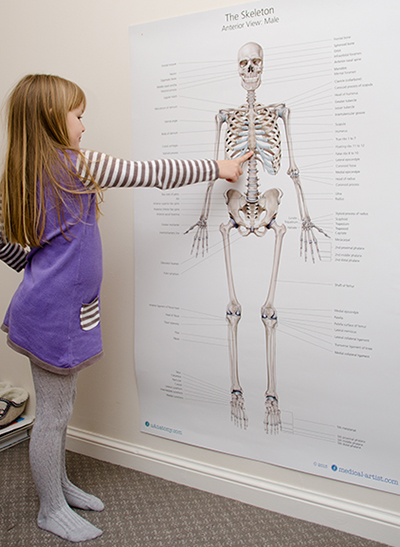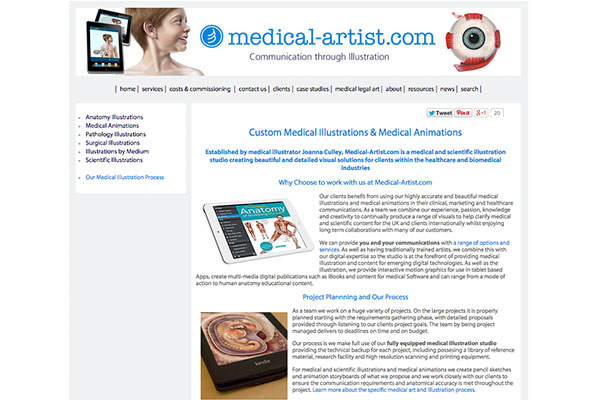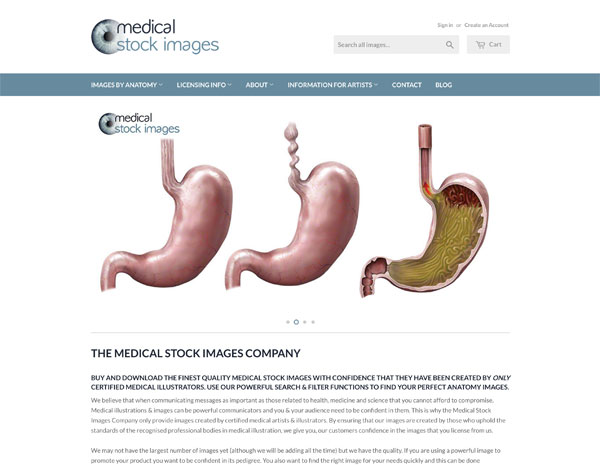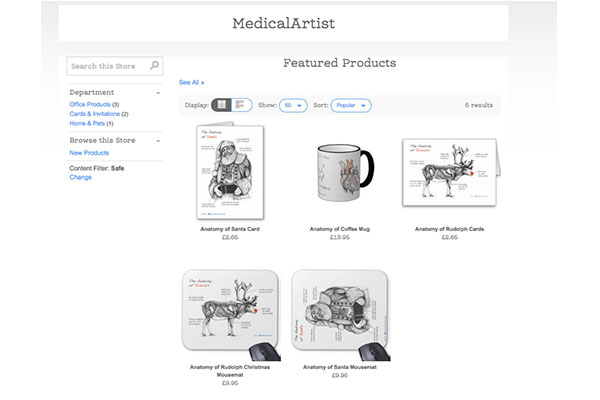
Using Posters As a Learning & Education Tool
4 December, 2014 / 0 Comments / Muscle AnatomyLife sized human skeleton illustrations and a superficial muscle dissection. An introduction to their creation.
There is nothing quite as engaging and eye-catching as a large, full-colour poster. After all, advertisers have used them for years to grab attention and stand out from competitors. But a poster is also a very powerful and engaging tool when it comes to education and learning.
It’s why medical artist, Joanna Culley, chose to draw and create a life-sized human skeleton and matching full-size muscle poster. Her aim was to depict the size, detail and proportion of every bone and muscle in the human body so that people could fully appreciate the intricacy of muscular and skeletal anatomy. Given that a standard diagram in a book or on the web is only a few centimetres big, Joanna wanted to create a piece of educational art that would literally stand out and be noticed.
The posters stand at an impressive 1.3 metres high (about 51 inches) and are very popular with younger learners as they are able to understand the different size and proportions of all of the bones, from the tiny metacarpal bone of the little finger to the largest bone, the femur, in the leg.
The human skeleton is formed of 270 bones at birth but bizarrely, this is reduced to 206 bones at adulthood. (full skeletal maturity is around 30 years of age.) The reduction in numbers is due to certain bones fusing together after birth. For example, although the human skull is practically full sized at birth, the individual plates of the skull are not fully fused (stuck) together to allow the baby’s head to pass through the birth canal. It takes around two years after birth for the skull to be completely fused.
Due to the large scale and size of the posters (standing at 1.3 metres high, about 51 inches), there is also plenty of room for clear labelling. This is very important factor in anatomical illustrations as it is difficult to read small labelling when around the image. Joanna wanted people to be able to read the labels instantly and be 100% confident of the exact point of reference.
So, if you want to know your femur bone from your fibula or your biceps muscle from your triceps, check out our skeleton and muscle posters here.



